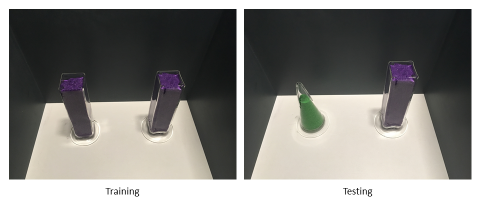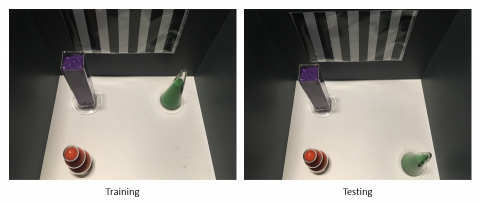Novel Object Recognition (NOR)

The NOR task is used to measure object memory using a task that takes advantage of a mouse's innate tendency to explore novel objects in their environment. After habituation, mice are placed in the NOR arenas along with two identical objects. They are allowed to explore freely and their behavior is recorded. 24 hours later, mice are again placed in the NOR arenas with two objects, but one of those objects is now novel. Mice are, again, allowed to explore freely and their behavior is recorded. The time spent exploring the novel object is compared to the time spent exploring the familiar object to assess object recognition memory. This procedure can be carried out in a way that is hippocampus independent (as detailed in Oliveira et al., 2015) if needed.
Spatial Object Recognition (SOR)

The SOR task is used to measure spatial learning and memory using a task that takes advantage of a mouse's innate tendency to explore novel objects in their environment. After habituation, mice are placed in the SOR arenas along with either two identical OR three different objects. There is also a symbolic spatial cue on one wall of each arena to serve as a spatial landmark or reference point. They are allowed to explore freely and their behavior is recorded. 24 hours later, mice are again placed in the SOR arenas with the same objects, but one of those objects is now in a novel location. Mice are, again, allowed to explore freely and their behavior is recorded. The time spent exploring the moved object is compared to the time spent exploring the unmoved objects to assess the mouse's spatial memory.
For the Three Chamber Social Task, please see the "Social Behavior" section.